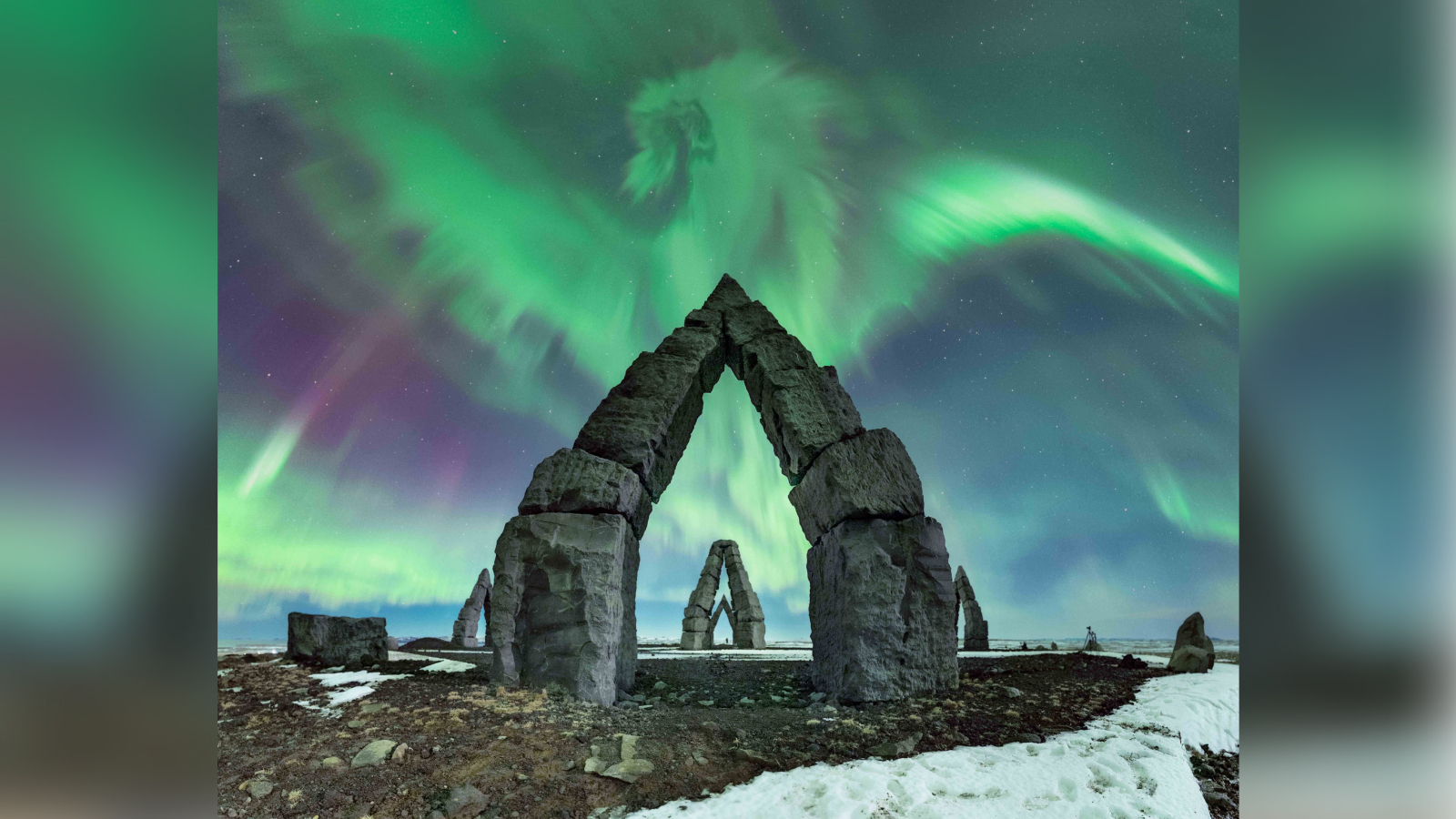
From mesmerizing "mythical monsters" to jaw-dropping distant constellations, the shortlisted candidates for Astronomy Photographer of the Year 2024 showcase the magnificent beauty in the skies around us. Here are this year's stunning nominees.
A Night with the Valkyries — Jose Miguel Picon Chimelis

In this image, a powerful geomagnetic storm creates a stunning display of multicolored hues across the night sky in Iceland.
"There was a prediction of a KP7 storm [a strong geomagnetic storm that can cause auroras and affect electrical power systems] and I was excited as to what I might see," photographer José Miguel Picón Chimelis said in a statement.
He took the panoramic photo near Eystrahorn mountain, capturing a scene full of vibrant colors, which he described as "one of the most amazing that I have experienced in my nighttime photography outings."
Solar Pulsation — Wenlian Li
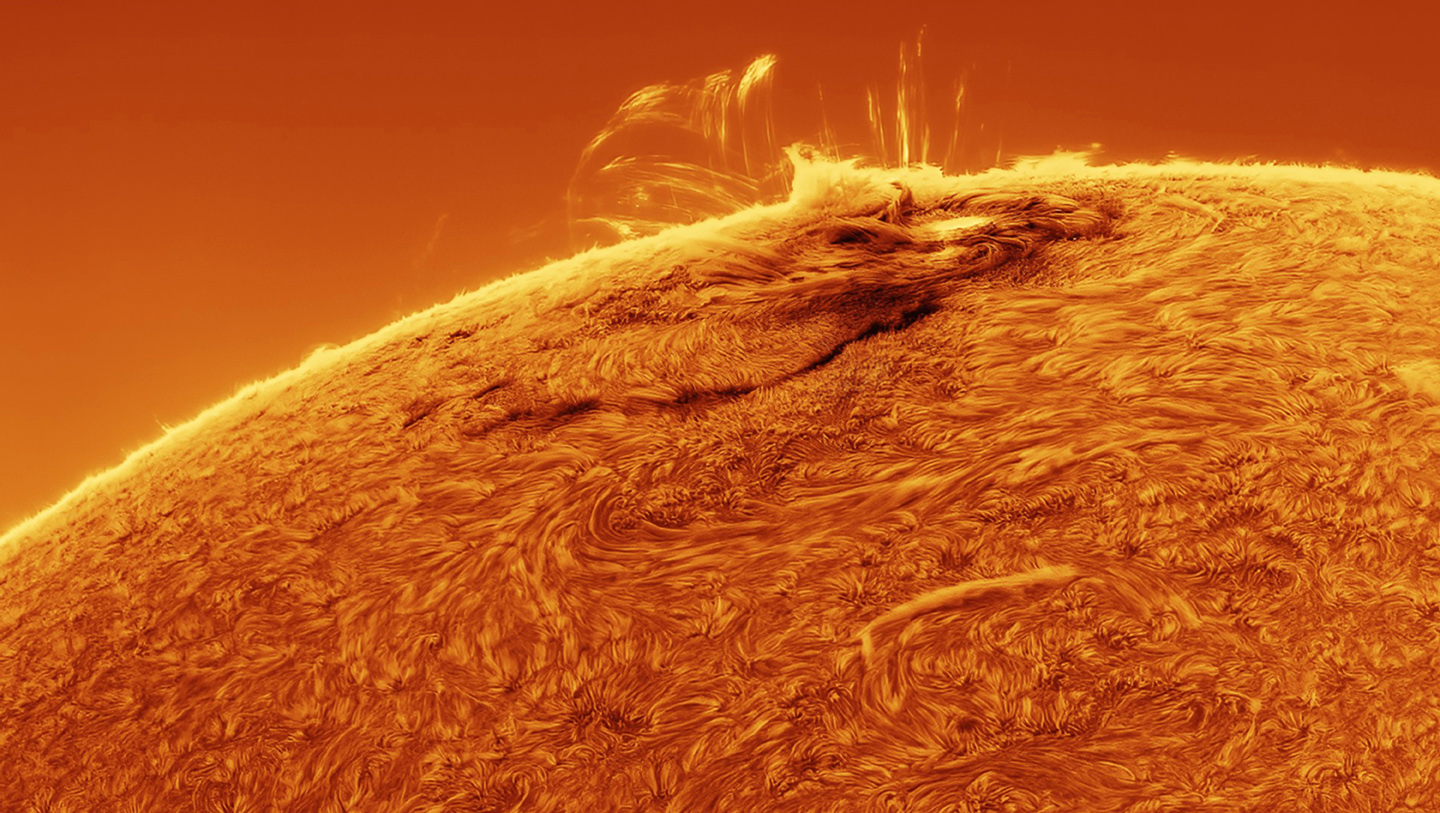
In this vibrant display of energy, photographer Wenlian Li captured an exploding sunspot spewing out glowing plasma from the sun's surface.
Observations at night — Jakob Sahner
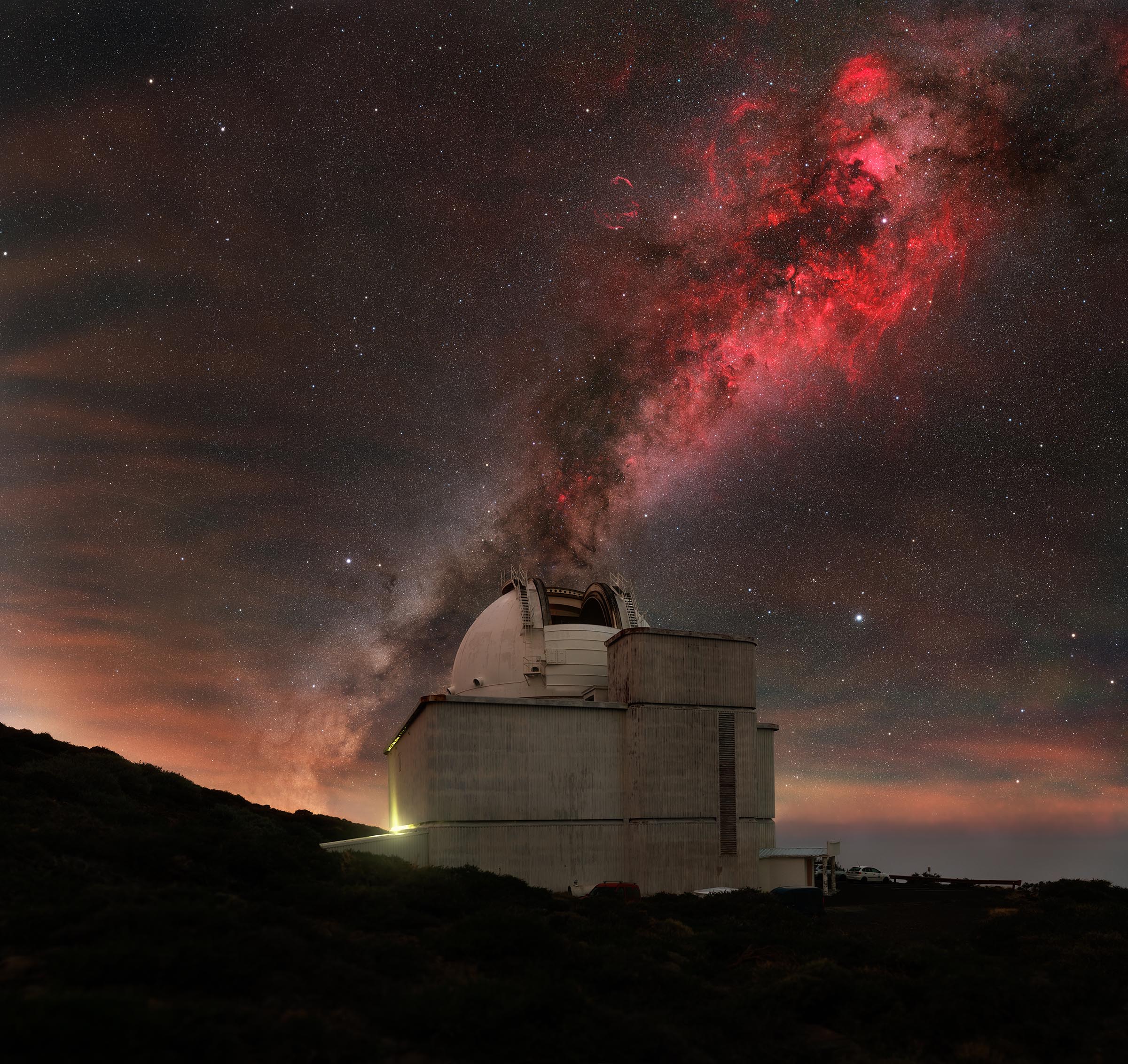
In this shot from La Palma, one of the Canary Islands in the Atlantic Ocean, the immense Isaac Newton Telescope sits below ominous cosmic clouds from the Cygnus constellation.
"The Cygnus region with its bright and vibrant star-forming regions is one of my favorite parts of the night sky. You can see it in the top right of the image," photographer Jakob Sahner said in the statement.
Cygnus, which translates to "the swan" in Latin, is a northern constellation that sits above the Milky Way.
Related: The Milky Way will be visible without a telescope this summer. Here are the key nights to watch for.
Arctic Dragon — Carina Letelier Baeza
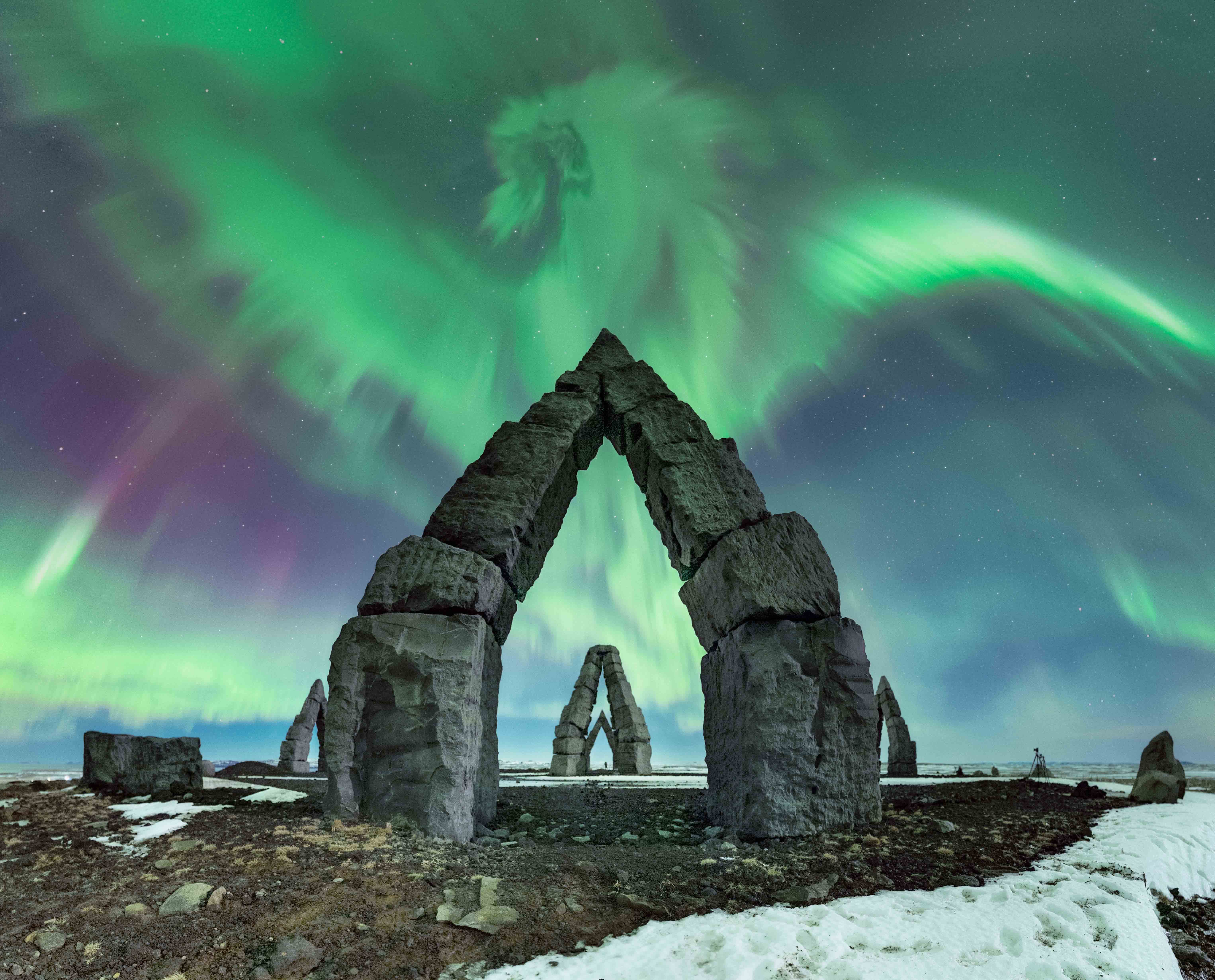
Carina Letelier Baeza captured the aurora borealis forming the shape of a dragon. Its tail descends into the horizon, and bright green hues take the shape of wings that tower over the rock pyramids of the Arctic Henge in Iceland.
Serpentine — Paul Haworth
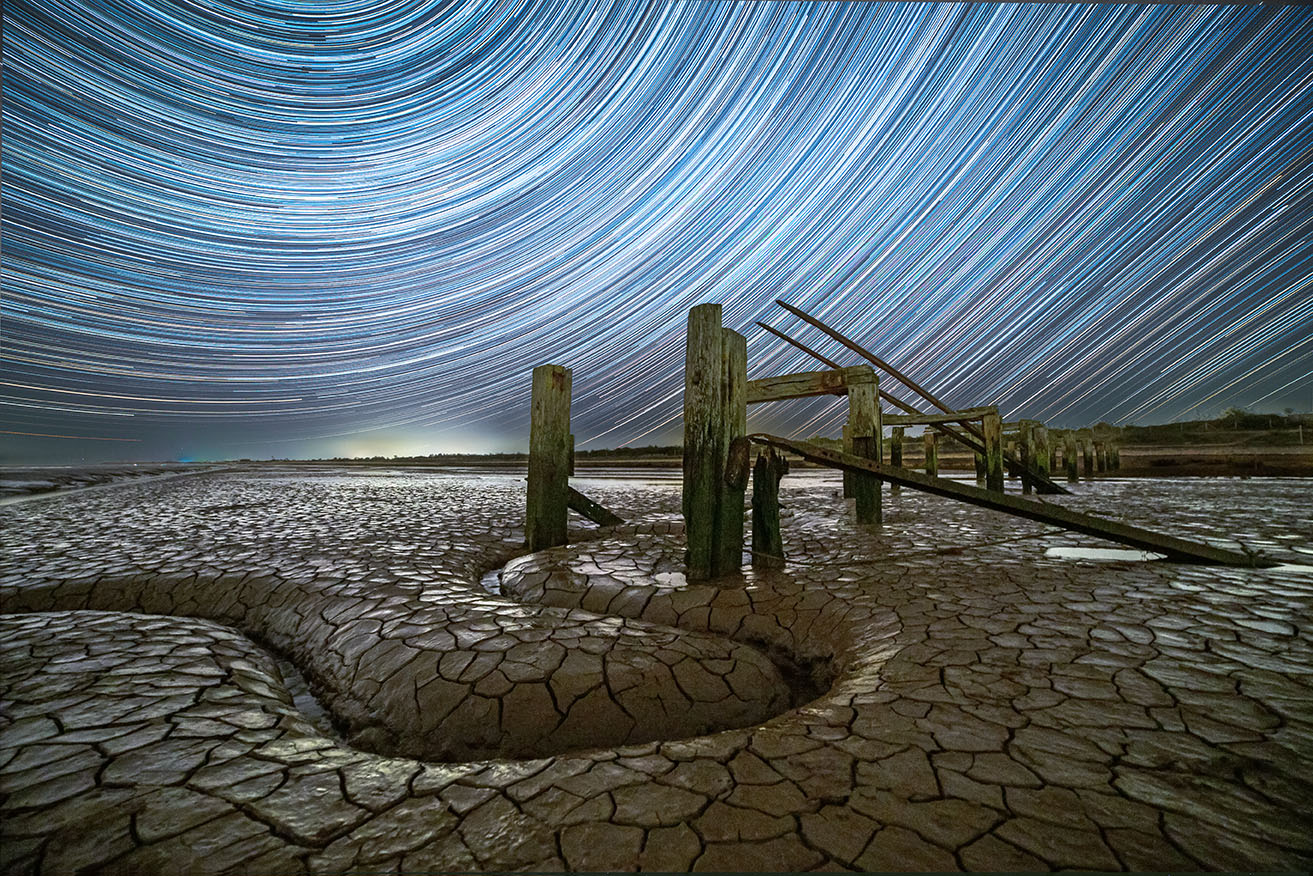
Paul Haworth created this entrancing image of radial stars above the ruins of an old jetty and cracked mudflats at Snettisham beach in Norfolk, U.K.
"I named this image 'Serpentine' as I love the curved channel in the mudflat, mirroring the trailing stars, and the wonderful scaly texture of the mud cracks," Haworth said in the statement.
The Galaxy Devourer — ShaRa (Shared Remote Astrophotography) Team
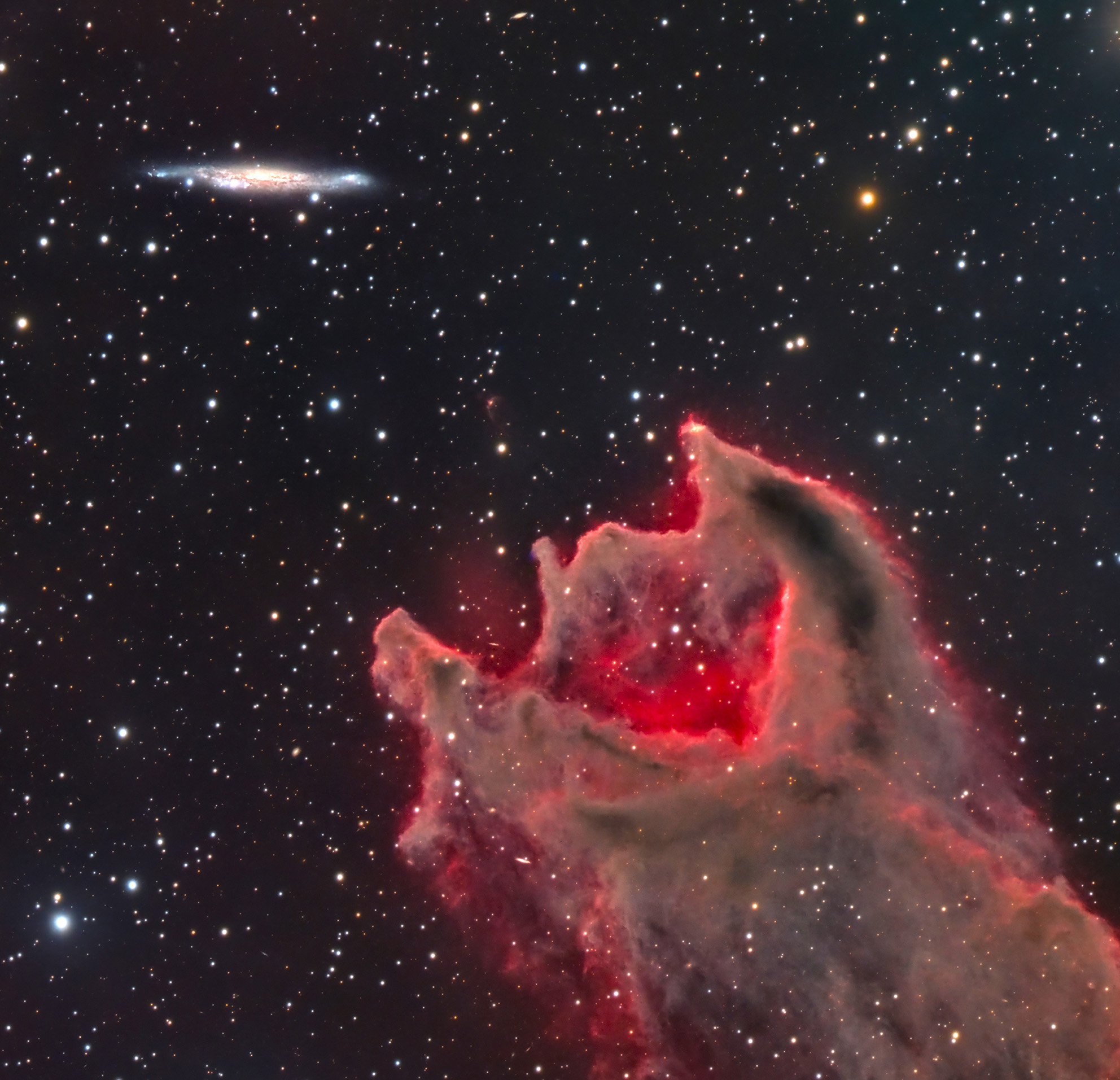
The interstellar clouds of CG 4 (Cometary Globule 4) form a monstrous shape as if ready to devour the cosmos, in this picture taken by a team of astrophotographers known as ShaRA (Shared Remote Astrophotography).
The peculiar formation of gas clouds and dust is classed as a "cometary globule" because of its comet-like shape, and it's often referred to as "God's Hand" because of its similarity to an arm stretching across the universe.
Along with these names, a member of the astrophotography team noticed its resemblance to two famous fictional monsters.
"Is this the cosmic sandworm of Arrakis, from 'Dune,' or the terrifying Graboid from the film 'Tremors'?" ShaRa group member Alessandro Ravagnin said in the statement.
The Blue Details of M45: The Pleiades — Sandor Biliczki
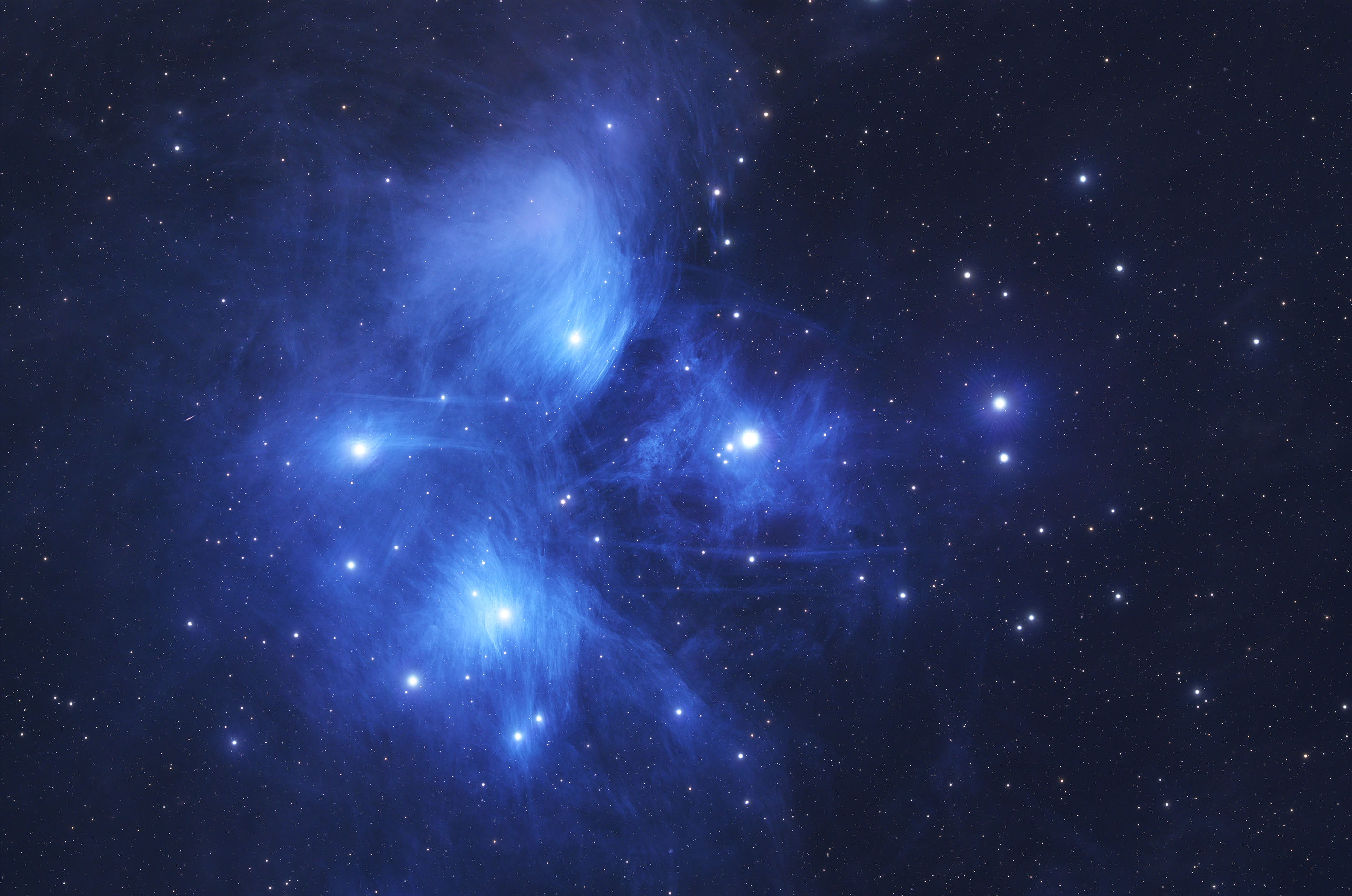
In this image, Sándor Biliczki captured the beauty of the Pleiades constellation.
Also known as Messier 45 or the Seven Sisters, the Pleiades consists of thousands of stars but is known for its seven brightest stars and is located 445 light-years from Earth, according to NASA.
Due to light pollution in Budapest, Biliczki traveled to Spain to photograph the constellation.
"The Pleiades are a popular target among astrophotographers, but there are still many tiny details to be discovered," Biliczki said in the statement.
A Cosmic Firework: the Geminid Meteor Shower — Jakob Sahner
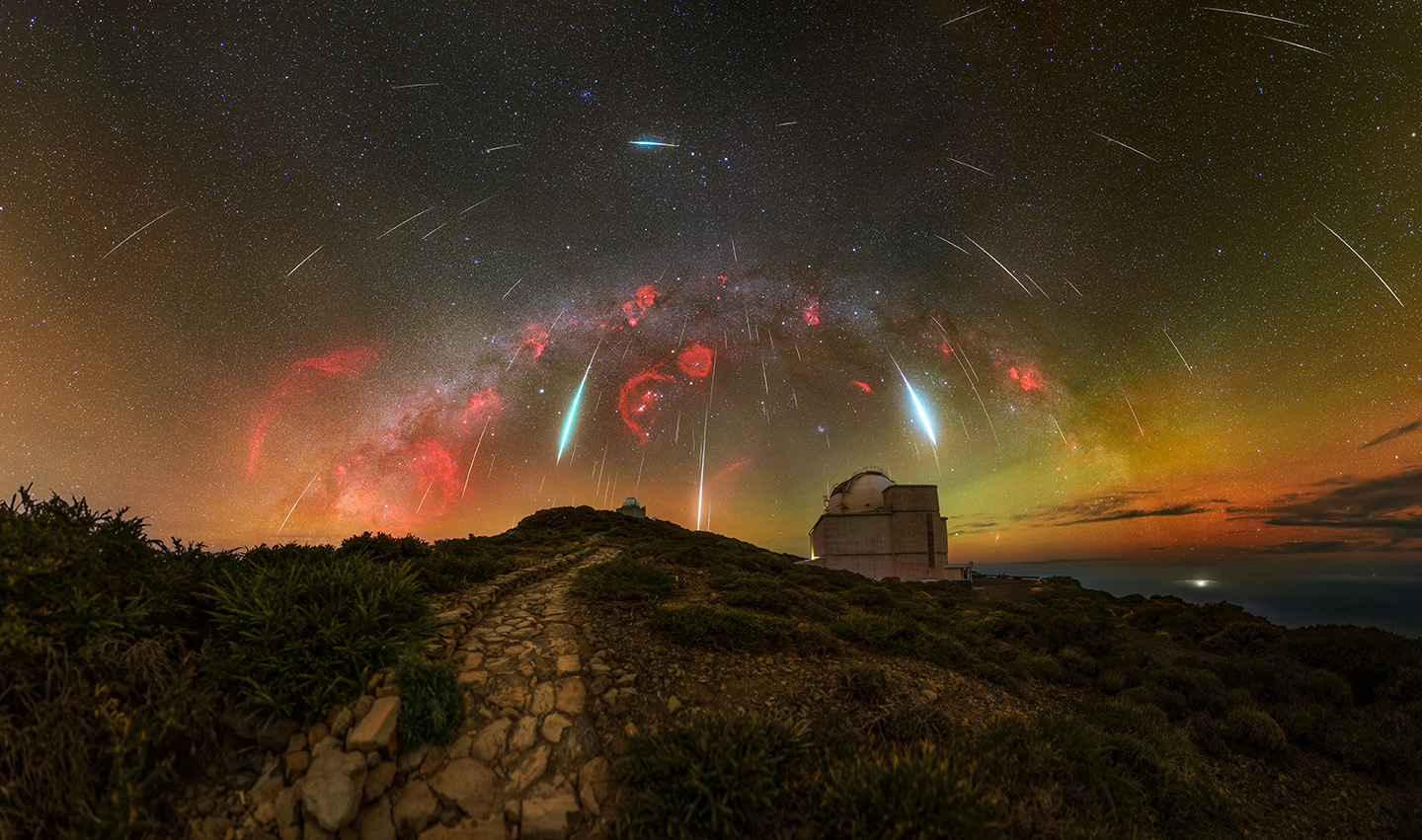
This panorama captures the Geminid meteor shower in front of the entire winter Milky Way in the night sky over La Palma.
Jakob Sahner said he could see three meteors per minute within his field of view during the peak of the shower.
The Scream of a Dying Star — Yann Sainty
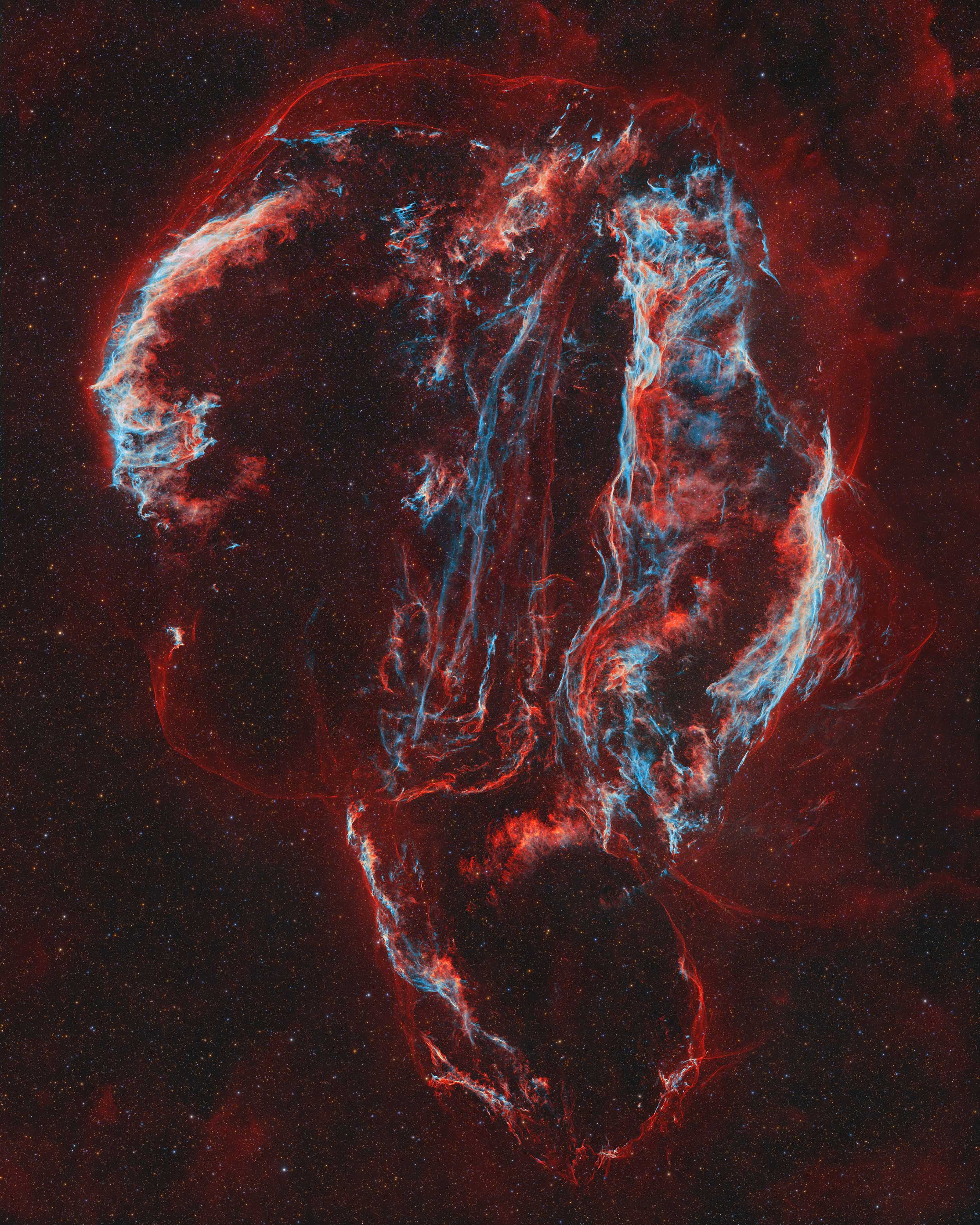
Yann Sainty captured the Cygnus supernova in this haunting image, named "The Scream of a Dying Star."
The name is a reference to 'The Scream,' the famous painting by Edvard Munch, symbolising the scream that continues to echo through space after the star’s death, according to the image caption.
Sainty took advantage of the lack of light pollution and a long exposure time to capture rare details of the Cygnus Loop, such as the outer layers of the supernova remnant.
Martian Dementors — Leonardo Di Maggio
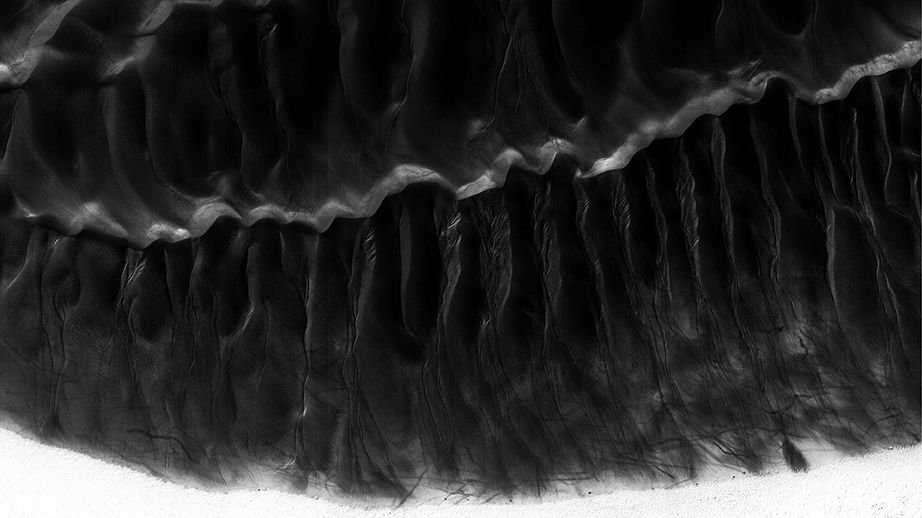
Leonardo Di Maggio created this eerie, abstract landscape image using a photo taken from NASA's Mars Reconnaissance Orbiter (MRO) — a spacecraft on a mission to find evidence of water on Mars.







